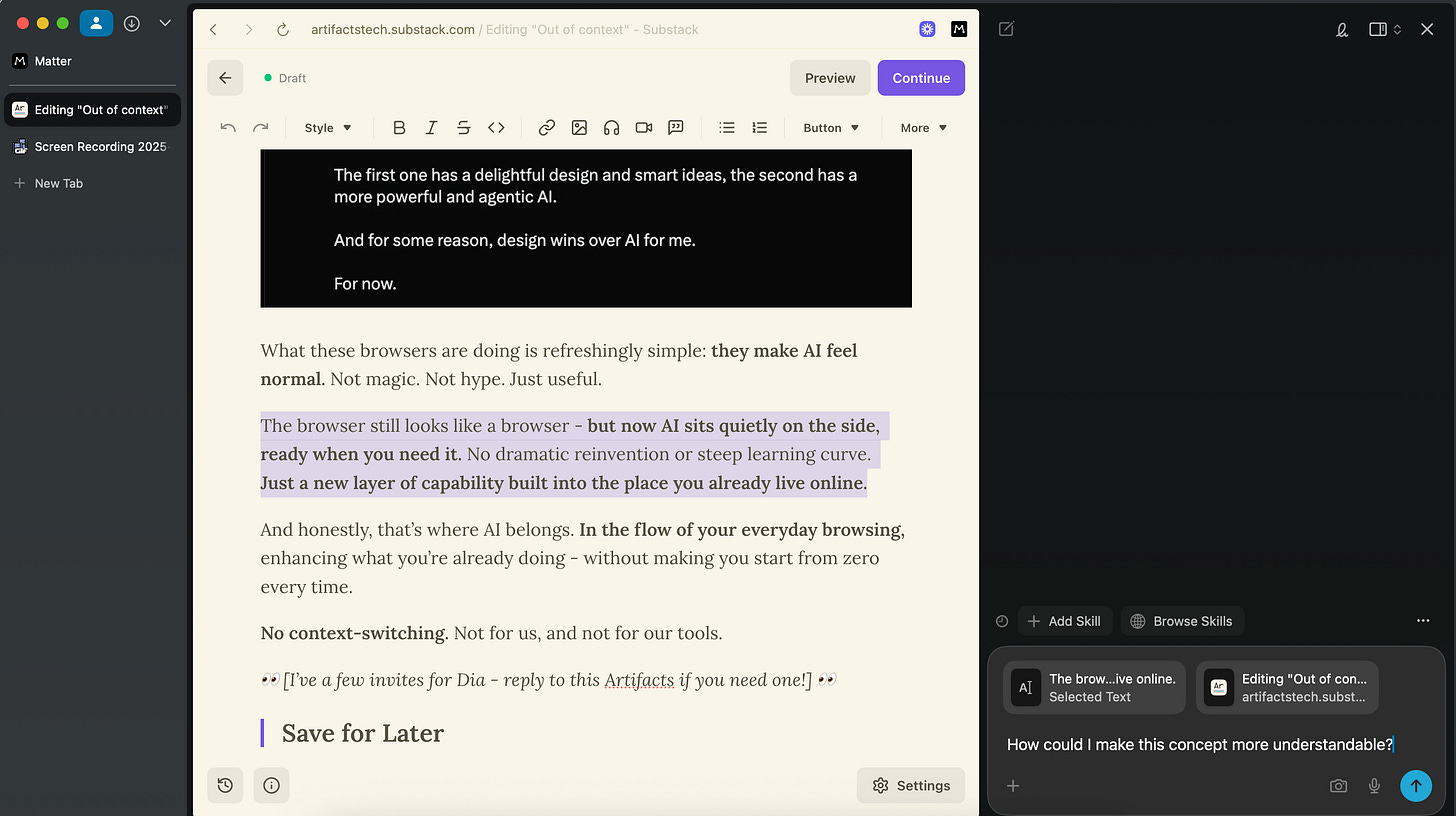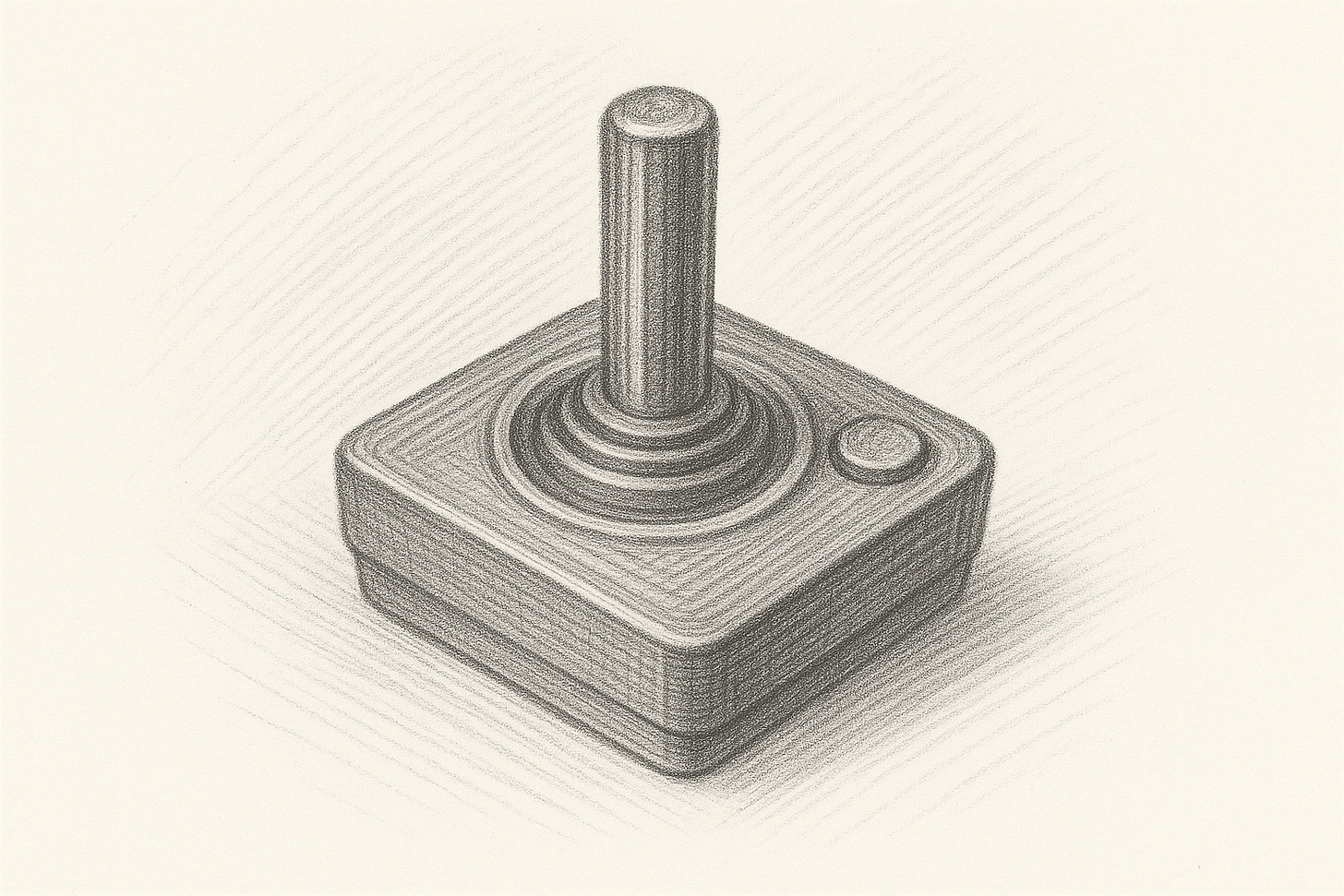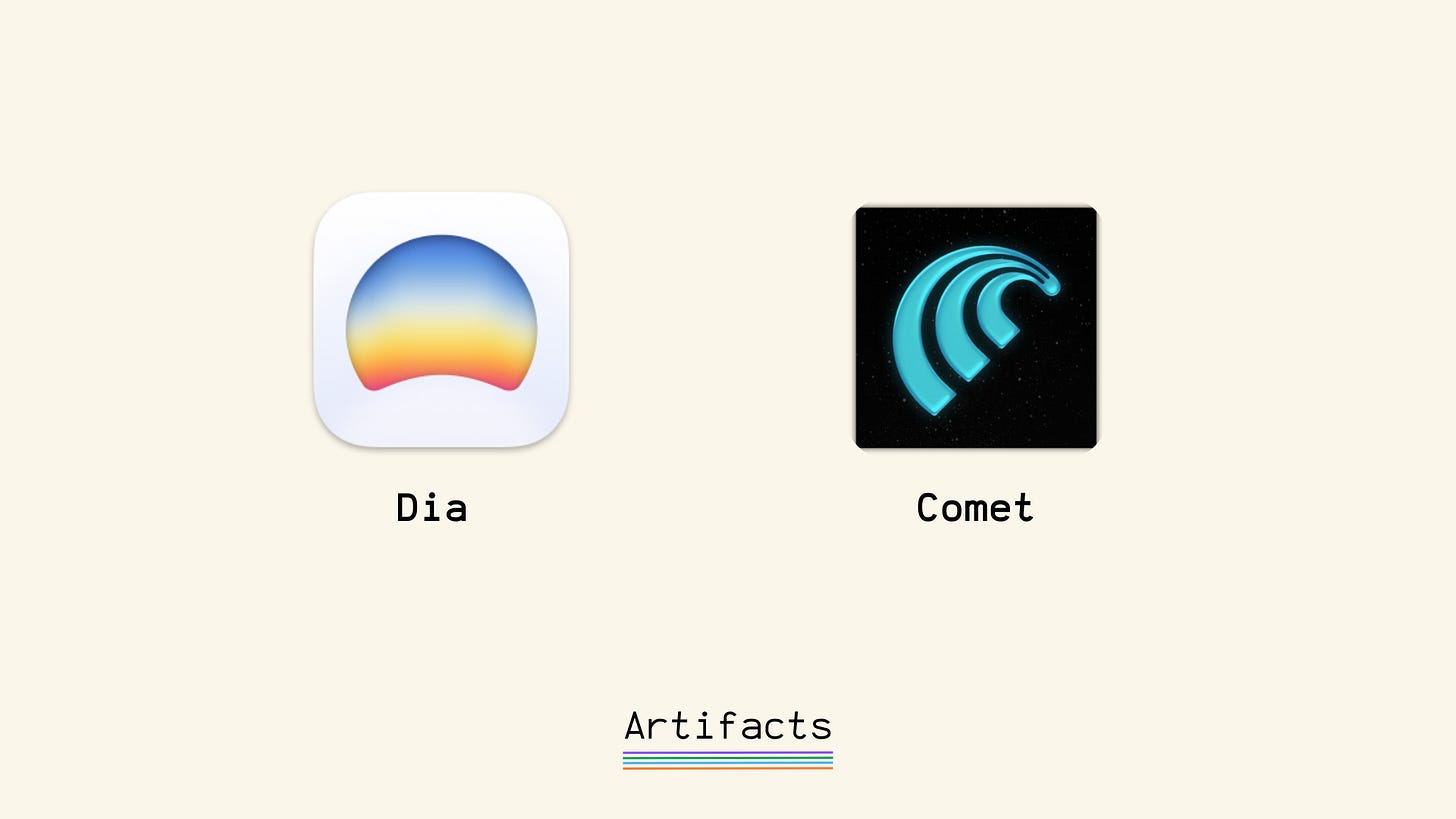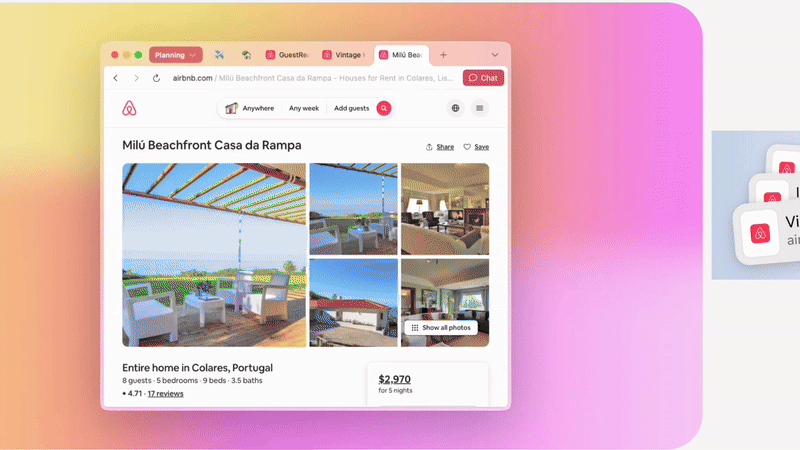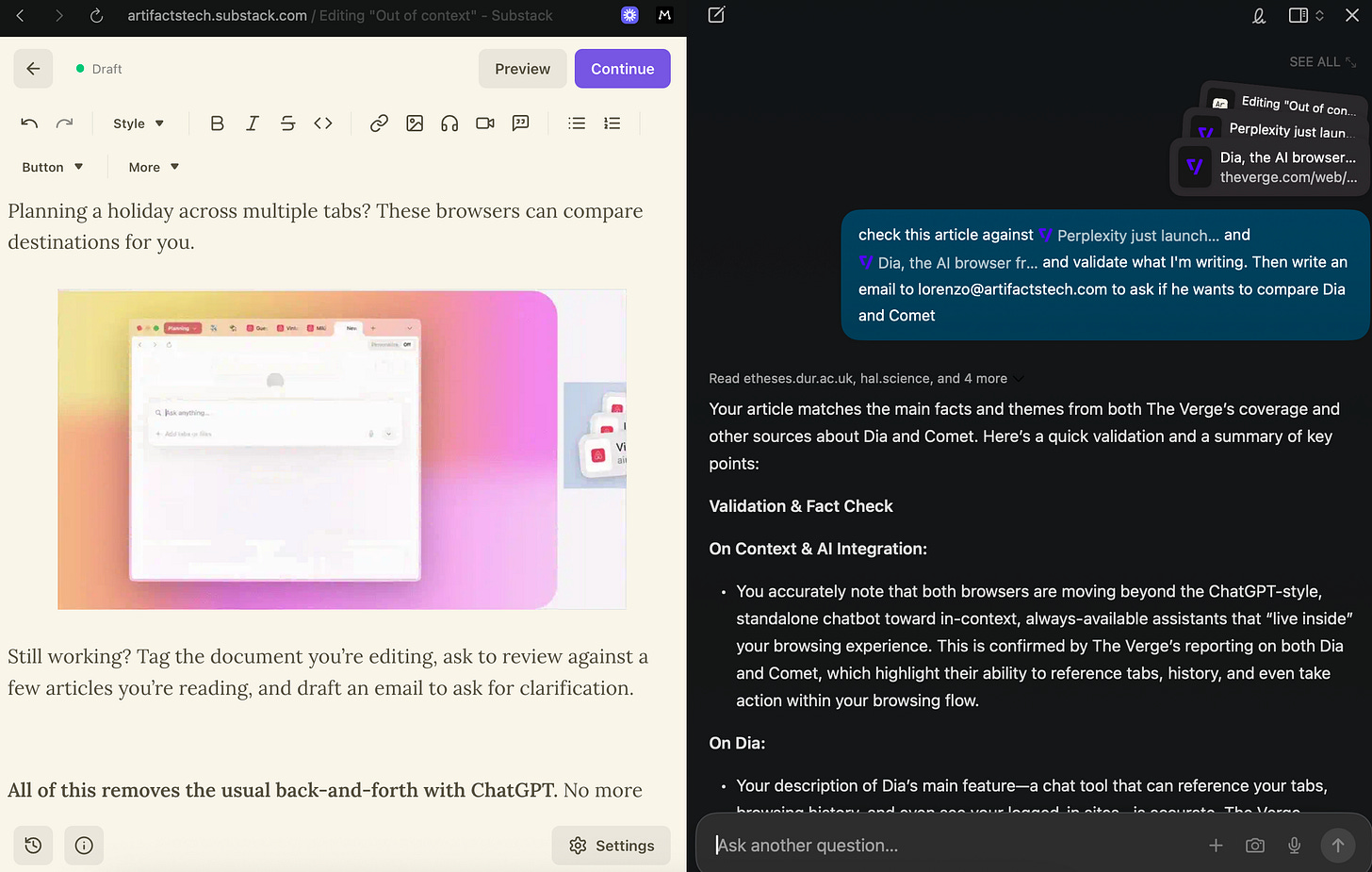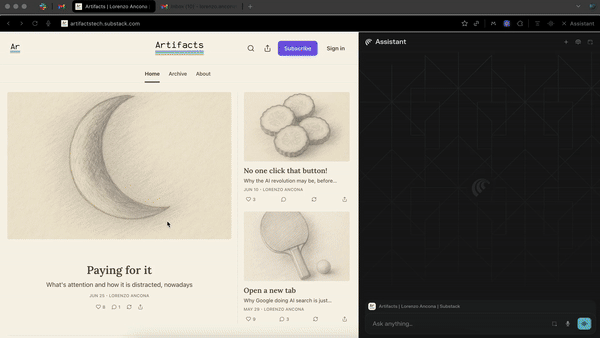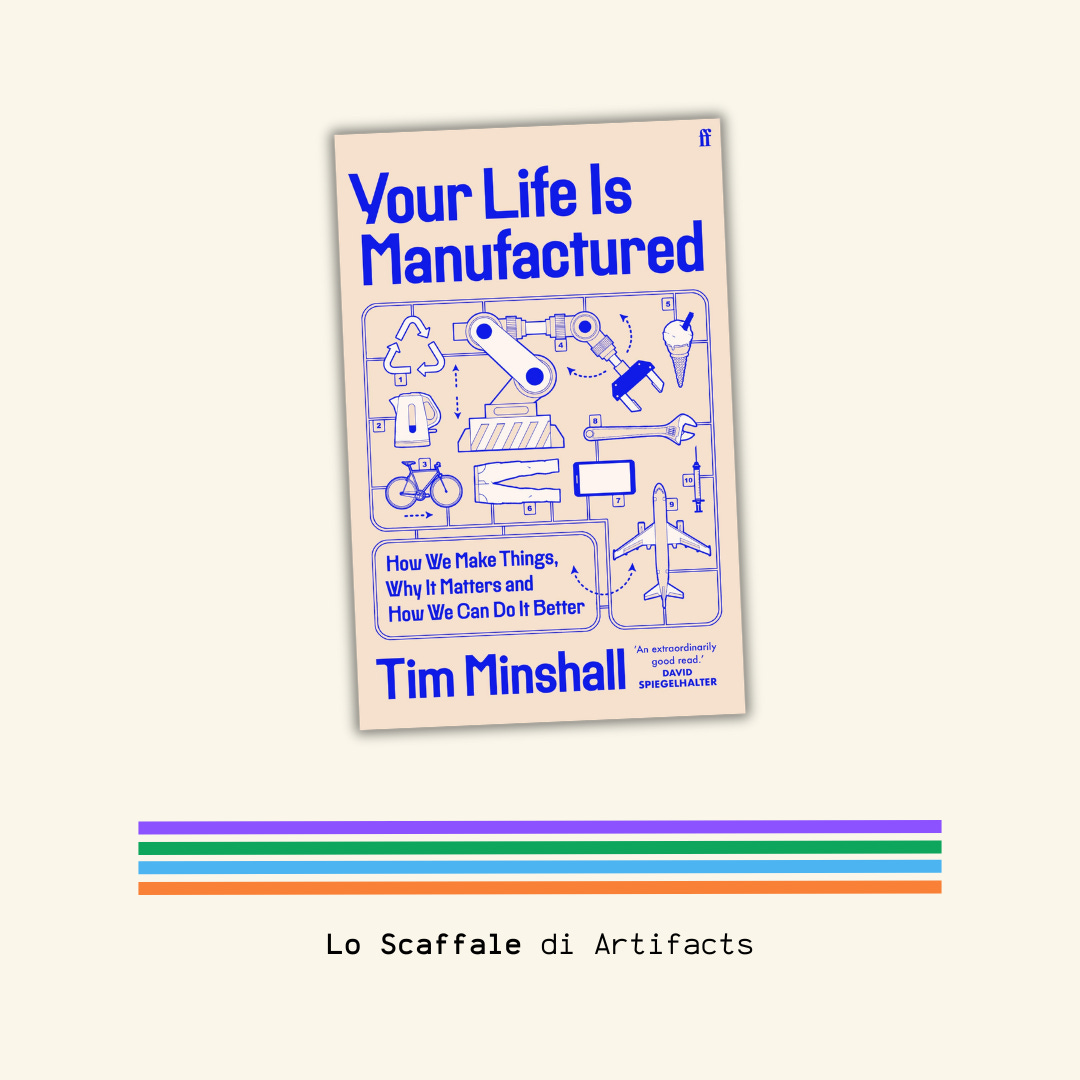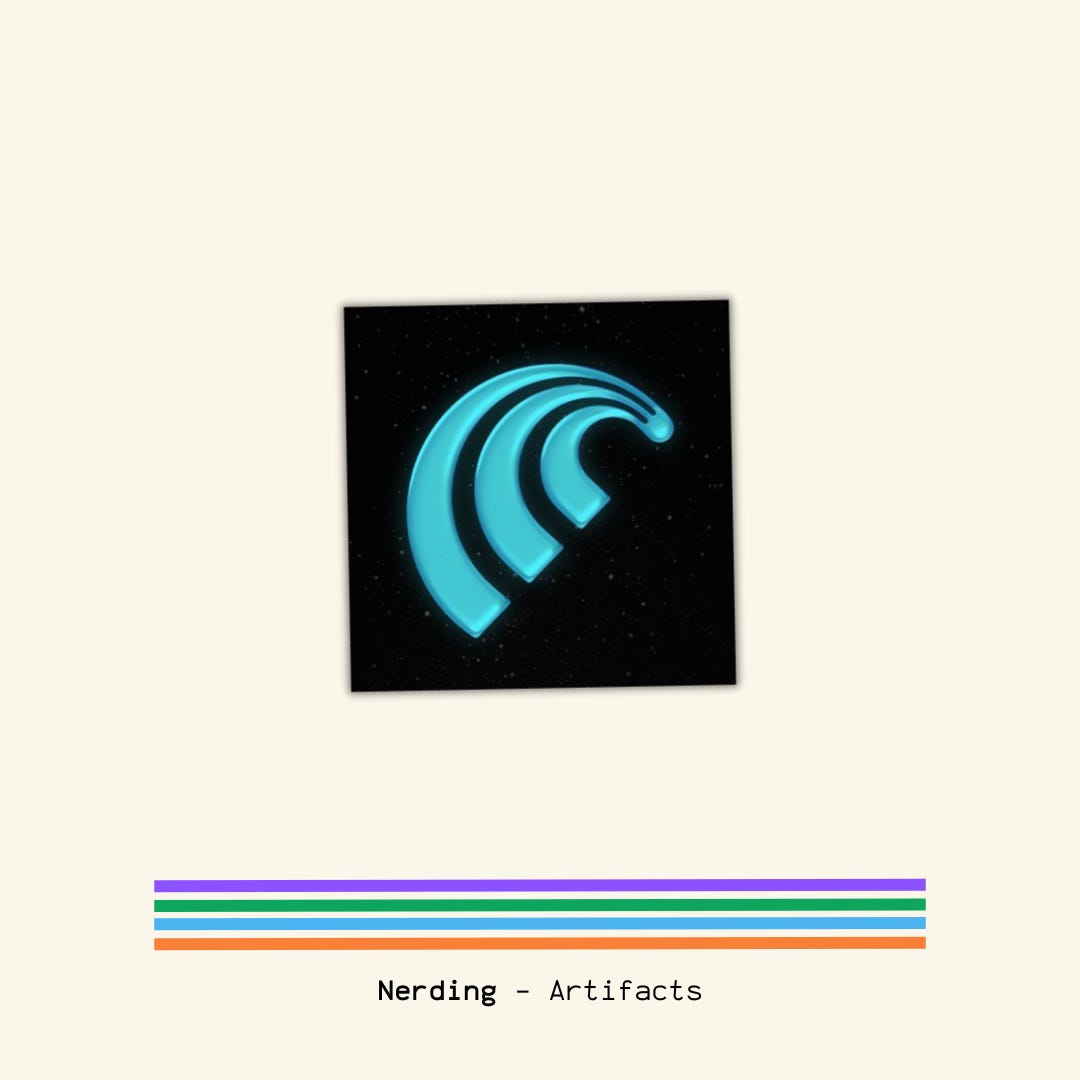Out of context
From tabs to teammates: how AI is changing the browser game
I’ve been testing what the future of browsing the internet might look like - why LLMs alone aren’t enough, and why something better, built on top of the Internet, isn’t as far-fetched as it sounds.
It’s been a fascinating journey. Here are my first takeaways.
The big problem with large language models - and chatbots, their most popular use - is simple: they lack context.
Every time you start a task, you have to explain everything from scratch. What you’re doing, why, what you’ve already done. You end up copy-pasting fragments and repeating yourself just to get the chatbot to perform reasonably well.
A lot of the good results you might get depend less on the model and more on you - on how good you are at gathering information, giving instructions, prompting it right.
Which is why ChatGPT’s (and others) ability to (1) store long-term instructions about who you are and (2) remember things across sessions is hailed as such a big deal.
But even that’s not enough. Because what we really want is AI to live inside the document, slide, or code we’re working on right now.
Call it a companion, co-pilot, or just a helpful mate - it needs to be in the context, not waiting on the sidelines for us to bring it up to speed.
And where does that context live, most of the time? In our browser.
Whether it’s Chrome, Safari, or something more niche, our tabs contain the bulk of what we’re doing. In many ways, the browser has become the operating system of our digital lives.
That’s why it makes so much sense for AI to be baked into our browsers - not as another tab, but within the flow of everything else
AI should sit next to whatever we’re doing. Reading what we’re reading. Seeing what we’re seeing. Getting the context, without having to be spoon-fed.
This has one immediate implication: the ChatGPT-style interface is already outdated.
What we’re moving toward is AI not as a standalone tool, but as a normal technology - integrated into the technologies we already use. The browser, this time, is front and center.
And it’s about time. Browsers haven’t changed much in the past 15 years. Sure, Chrome is slicker than Internet Explorer - but functionally, they’re not that different.
As browsers evolve into full-fledged operating systems for our online lives, AI becomes the joystick we use to play with them.
Or, to quote the genius tagline from The Browser Company: “You’ll never explain yourself again.” (Also, you’ll get amazing branzinos.)
This isn’t speculation: the industry is already headed there.
Over the past month, I’ve been testing two AI-powered browsers. One is Dia, from The Browser Company (yes, the folks behind Arc). The other is Comet, by Perplexity - the AI company Artifacts readers should already know well.
What I’ve seen is madness.
Both share a powerful new feature: you can chat with your tabs. And the chat sits right next to what you’re doing.
But it’s not just a UI gimmick with a dumb chatbot bolted on. These chats can see what you’re doing - so when you ask something, there’s no need to explain: “I’m writing this thing for this reason…” They already know.
Watching a YouTube video? You can chat with it.
Planning a holiday across multiple tabs? These browsers can compare destinations for you.
Still working? Tag the document you’re editing, ask to review against a few articles you’re reading, and draft an email to ask for clarification.
All of this removes the usual back-and-forth with ChatGPT. No more copy-pasting. No need to pick a model - because honestly, for low-intensity tasks like drafting messages, any LLM will do.
So you just care about technology solving your problems, less about the how.
Ah, Comet doesn’t just read what you’re doing - it can take action for you:
I don’t have a favourite yet. But here’s what I know so far:
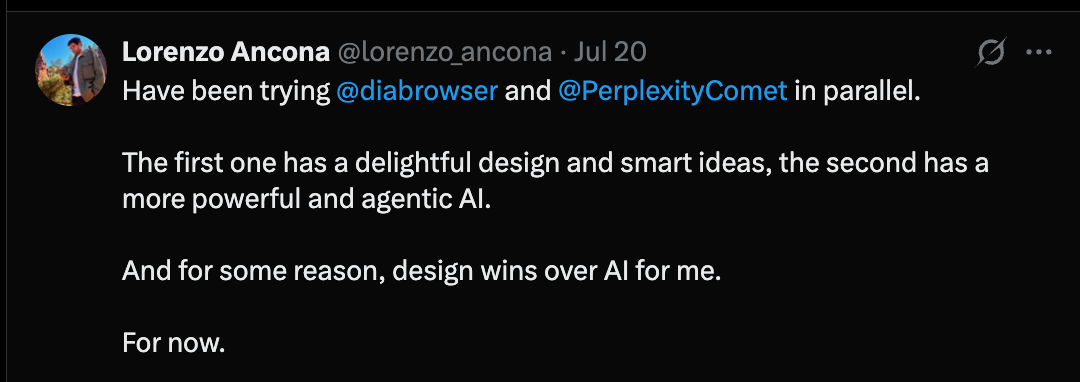
What these browsers are doing is refreshingly simple: they make AI feel normal. Not magic. Not hype. Just useful.
The browser still looks like a browser - but now AI sits quietly on the side, ready when you need it. No dramatic reinvention or steep learning curve. Just a new layer of capability built into the place you already live online.
And honestly, that’s where AI belongs. In the flow of your everyday browsing, enhancing what you’re already doing - without making you start from zero every time.
No context-switching. Not for us, and not for our tools.
👀 [I’ve a few invites for Dia - reply to this Artifacts if you need one!] 👀
Save for Later
Why making social media liable for content moderation may not be the best.
What do my streaming choices say about me?
AI and elections, we’ve some evidence. At least ChatGPT is romantic. But now we all think the same!
This guy had 8 jobs at the same time.
Age verification on social media is coming to town!
Can Europe be independent of US tech?
The Bookshelf
What I took away from “Your life is manufactured” is that every manufactured item follows an input-process-output model. The complexity involved can vary a lot depending on the product. It’s a very insightful read if you’re interested in logistics and how things get made.
📚 All the books I’ve read and recommended in Artifacts are here.
Nerding
Well, we’ve talked about it enough. Comet is so, so powerful - with a huge agentic AI that already does some interesting tasks. A lot to be done, but very promising. To get it, join the waitlist of Perplexity.
We’ve been here before
☕?
If you want to know more about Artifacts, where it all started, or just want to connect...



